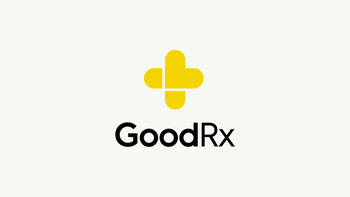
4 Atomoxetine Interactions You Should Know About
Key takeaways:
Atomoxetine (Strattera) is FDA approved to treat attention-deficit hyperactivity disorder (ADHD). It’s one of the few non-stimulant medications available for this condition.
Atomoxetine can interact with several medications. These include monoamine oxidase inhibitors (MAOIs), some medications used for lung conditions, and medications that raise blood pressure.
Talk with your healthcare provider about how to prevent or manage atomoxetine interactions. You should always check with them before starting atomoxetine to make sure it’s safe for you to take.
Access savings on related medications
Table of contents

Atomoxetine is a non-stimulant medication that’s FDA approved to treat attention-deficit hyperactivity disorder (ADHD). You may also know atomoxetine by its brand name, Strattera. Whether you take Strattera or atomoxetine, they both have the same effects. They also have the same side effects and interactions. This is because brand-name and generic medications are considered to be equal in how they work.
Atomoxetine is a selective norepinephrine reuptake inhibitor (NRI). This means it works by boosting levels of norepinephrine in the brain. Many medications used to treat ADHD are stimulants, but atomoxetine is not. If you’re taking atomoxetine for the first time, you’ll want to avoid or limit interactions.
So what are some important atomoxetine interactions to know about? And what’s the best way to manage them?
1. Monoamine oxidase inhibitors
Monoamine oxidase inhibitors (MAOIs) are prescribed to treat Parkinson’s disease and depression. But they aren’t used as often as other treatments. This is because MAOIs have lots of side effects and interactions. They also have certain dietary restrictions. Examples of MAOIs include rasagiline (Azilect), phenelzine (Nardil), and selegiline (Eldepryl, Zelapar).
Combining atomoxetine with MAOIs can cause a dangerous interaction. There are reports of serious symptoms like agitation, fever, and coma. In some cases, this combination could be fatal.
You shouldn’t take atomoxetine and MAOIs together. If you’re switching from one to the other, there needs to be at least 2 weeks between doses of the two medications to avoid this interaction. For example, you should wait at least 2 weeks after your last dose of atomoxetine before starting an MAOI.
Your healthcare provider or pharmacist can help you determine if you’re taking an MAOI. They can also help you avoid this serious interaction.
2. Albuterol
Albuterol can help open the airways. It treats conditions like asthma and chronic obstructive pulmonary disease. Both atomoxetine and albuterol can raise your heart rate and blood pressure. So, combining the two can cause more serious increases in heart rate and blood pressure.
This interaction seems to be worse when albuterol is taken as a pill or an injection. Using an albuterol inhaler (ProAir, Ventolin, Proventil) may cause fewer of these side effects.
Despite this interaction, there are times both medications may be needed. In this case, your healthcare provider may ask you to check your heart rate and blood pressure more often. They may also ask you to watch for interaction symptoms, such as a fast heart rate or headaches. In some cases, they may recommend an alternative to atomoxetine.
3. Certain antidepressants
Atomoxetine is broken down in the body by liver enzymes (proteins). The main enzyme that breaks down atomoxetine is called CYP2D6. Some antidepressants block CYP2D6. This can cause higher levels of atomoxetine in the body. This raises the risk of side effects, such as nausea, tiredness, and low appetite.
Antidepressants that block CYP2D6 include fluoxetine (Prozac), paroxetine (Paxil, Brisdelle), and bupropion. If you’re taking one of these medications, your healthcare provider may prescribe a lower dose of atomoxetine.
4. Medications that raise blood pressure
As mentioned above, atomoxetine can raise blood pressure. This means it may interact with other medications that also raise blood pressure.
Sometimes, medications are prescribed to raise blood pressure intentionally, like midodrine. Midodrine can be helpful if a person has orthostatic hypotension. This is when people experience a drop in blood pressure upon changing positions.
For other medications, higher blood pressure is a side effect. These include decongestants like pseudoephedrine (Sudafed) and phenylephrine (Sudafed PE). It also includes stimulants like methylphenidate (Ritalin) and amphetamine salts (Adderall).
Sometimes, you may need to take atomoxetine and another medication that raises blood pressure. In this case, your healthcare provider will likely ask you to check your blood pressure more often. Or they may suggest an alternative medication to avoid the interaction altogether.
When should I contact my healthcare provider about an atomoxetine interaction?
It’s important to talk with your healthcare provider or pharmacist before starting atomoxetine. And make sure to have a current medication list with you. That can help them screen for interactions.
If you're concerned about an atomoxetine interaction, it’s a good idea to talk with your healthcare provider. You may not need a medication change if it’s a mild interaction. But it doesn’t hurt to double check.
Some atomoxetine interactions may only need extra monitoring. For example, you may need to check your blood pressure more often. But some interactions are more serious. So your healthcare provider may suggest changing one of your medications instead.
Talk to your provider if you’re having signs or symptoms of an interaction. With atomoxetine, these can include a fast heartbeat, high blood pressure, or agitation.
The bottom line
Atomoxetine is a non-stimulant medication used to treat ADHD. It’s also known by its brand name, Strattera. Atomoxetine can interact with certain antidepressants, albuterol, and medications that raise blood pressure. Always check with your healthcare provider before starting atomoxetine. This can help them determine whether it’s safe for you to take.
Why trust our experts?



References
Endocrine Society. (2022). Adrenal hormones.
Fiedorowicz, J. G., et al. (2007). The role of monoamine oxidase inhibitors in current psychiatric practice. Journal of Psychiatric Practice.
Johnson, D. B., et al. (2022). Albuterol. StatPearls.
Major Pharmaceuticals. (2022). Atomoxetine [package insert].
Was this page helpful?
Related Articles
Browse medications
View AllResearch prescriptions and over-the-counter medications from A to Z, compare drug prices, and start saving.



















